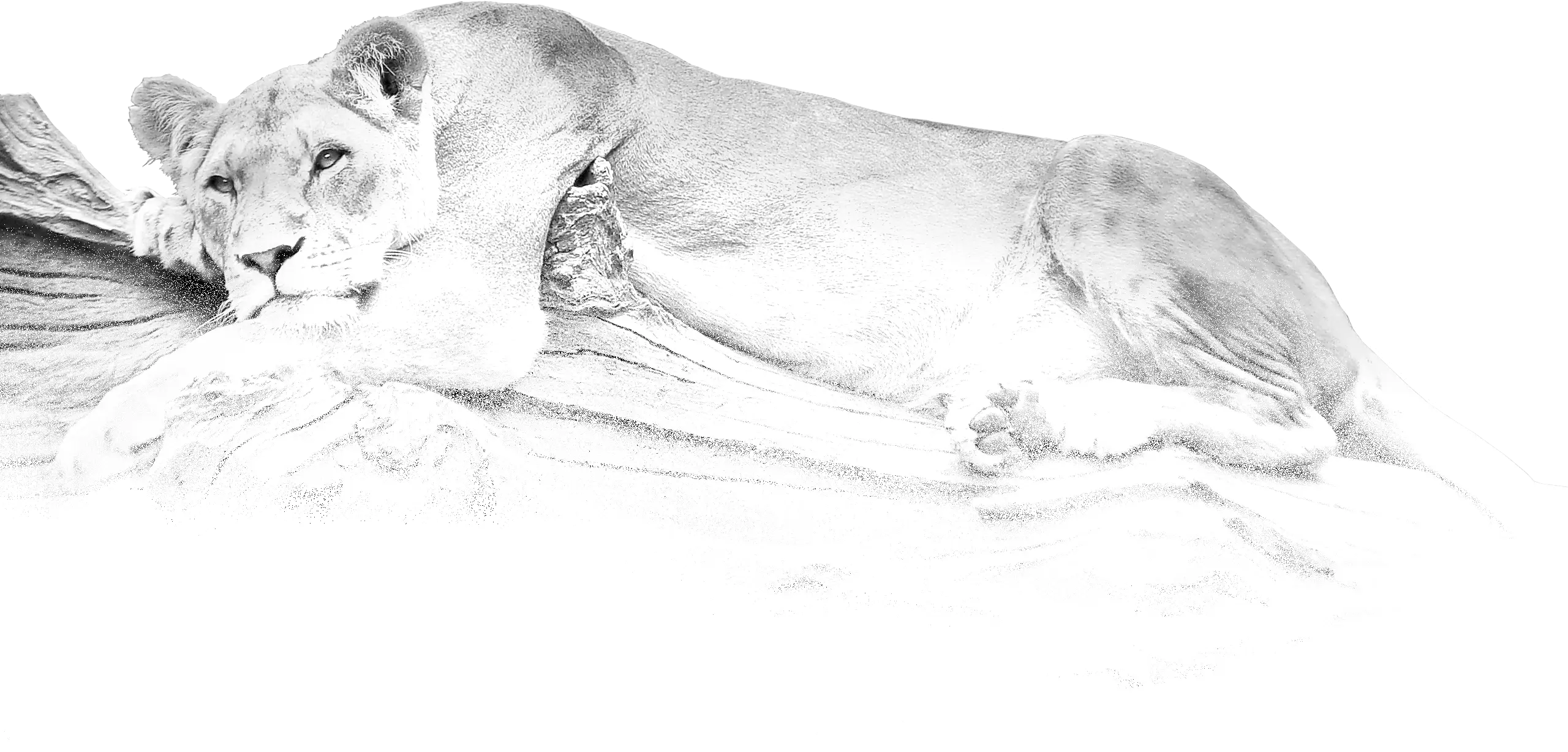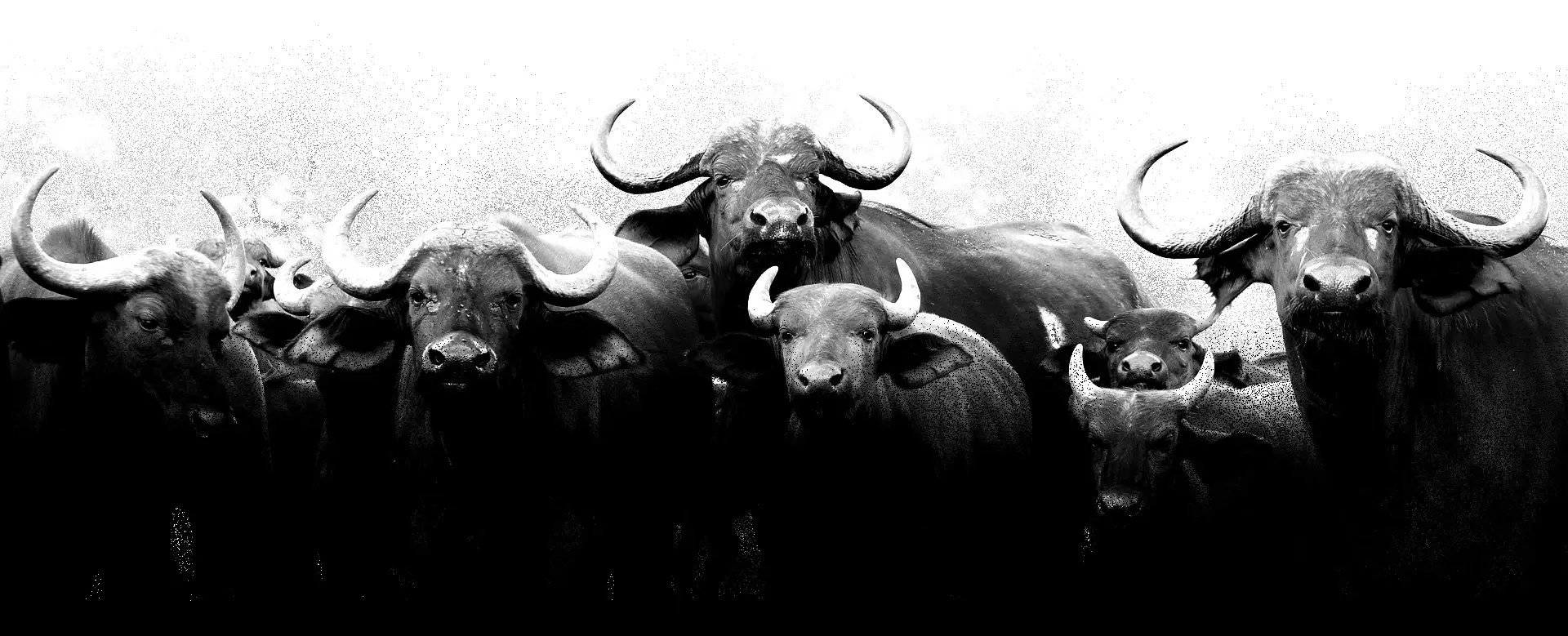
(Mammalia)
Mammals
Ссавці
Mammal, (class Mammalia), any member of the group of vertebrate animals in which the young are nourished with milk from special mammary glands of the mother. In addition to these characteristic milk glands, mammals are distinguished by several other unique features. Hair is a typical mammalian feature, although in many whales it has disappeared except in the fetal stage. The mammalian lower jaw is hinged directly to the skull, instead of through a separate bone (the quadrate) as in all other vertebrates. A chain of three tiny bones transmits sound waves across the middle ear. A muscular diaphragm separates the heart and the lungs from the abdominal cavity. Only the left aortic arch persists. (In birds the right aortic arch persists; in reptiles, amphibians, and fishes both arches are retained.) Mature red blood cells (erythrocytes) in all mammals lack a nucleus; all other vertebrates have nucleated red blood cells.
Except for the monotremes (an egg-laying order of mammals comprising echidnas and the duck-billed platypus), all mammals are viviparous—they bear live young. In the placental mammals (which have a placenta to facilitate nutrient and waste exchange between the mother and the developing fetus), the young are carried within the mother’s womb, reaching a relatively advanced stage of development before birth. In the marsupials (e.g., kangaroos, opossums, and wallabies), the newborns are incompletely developed at birth and continue to develop outside the womb, attaching themselves to the female’s body in the area of her mammary glands. Some marsupials have a pouchlike structure or fold, the marsupium, that shelters the suckling young.
The class Mammalia is worldwide in distribution. It has been said that mammals have a wider distribution and are more adaptable than any other single class of animals, with the exception of certain less-complex forms such as arachnids and insects. This versatility in exploiting Earth is attributed in large part to the ability of mammals to regulate their body temperatures and internal environment both in excessive heat and aridity and in severe cold.
There are more than 5,500 species of living mammals, arranged in about 125 families and as many as 27–29 orders (familial and ordinal groupings sometimes vary among authorities).
Reproduction
The period of intrauterine development, or gestation, varies widely among eutherians, generally depending on the size of the animal but also influenced by the number of young per litter and the condition of young at birth. The gestation period of the golden hamster is about 2 weeks, whereas that of the blue whale is 11 months and that of the African elephant 21 to 22 months.
At birth the young may be well-developed and able to move about at once (precocial), or they may be blind, hairless, and essentially helpless (altricial). In general, precocial young are born after a relatively long gestation period and in a small litter. Hares and many large grazing mammals bear precocial offspring. Rabbits, carnivores, and most rodents bear altricial young.
After birth young mammals are nourished by milk secreted by the mammary glands of the female. The development of milk-producing tissue in the female mammae is triggered by conception, and the stimulation of suckling the newborn prompts copious lactation. In therians (marsupials and placentals) the glands open through specialized nipples. The newborn young of marsupials are unable to suckle, and milk is “pumped” to the young by the mother.
Milk consists of fat, protein (especially casein), and lactose (milk sugar), as well as vitamins and salts. The actual composition of milk of mammals varies widely among species. The milk of whales and seals is some 12 times as rich in fats and 4 times as rich in protein as that of domestic cows but contains almost no sugar. Milk provides an efficient energy source for the rapid growth of young mammals; the weight at birth of some marine mammals doubles in five days.
Behaviour
Some types of mammals are solitary except for brief periods when the female is in estrus. Others, however, form social groups. Such groups may be reproductive or defensive, or they may serve both functions. In those cases that have been studied in detail, a more or less strict hierarchy of dominance prevails. Within the social group, the hierarchy may be maintained through physical combat between individuals, but in many cases stereotyped patterns of behaviour evolve to displace actual combat, thereby conserving energy while maintaining the social structure (see also animal behaviour, territorial behaviour, and territoriality).
A pronounced difference between sexes (sexual dimorphism) is frequently extreme in social mammals. In large part this is because dominant males tend to be those that are largest or best-armed. Dominant males also tend to have priority in mating or may even have exclusive responsibility for mating within a “harem.” Rapid evolution of secondary sexual characteristics, including size, can take place in a species with such a social structure.
A complex behaviour termed “play” frequently occurs between siblings, between members of an age class, or between parent and offspring. Play extends the period of maternal training and is especially important in social species, providing an opportunity to learn behaviour appropriate to the maintenance of dominance.
That area covered by an individual in its general activity is frequently termed the home range. A territory is a part of the home range defended against other members of the same species. As a generalization it may be said that territoriality is more important in the behaviour of birds than of mammals, but data for the latter are available primarily for diurnal species. Frequently territories of mammals are “marked,” either with urine or with secretions of specialized glands, as in lemurs. This form of territorial labeling is less evident to humans than the singing or visual displays of birds. Many mammals that do not maintain territories per se nevertheless will not permit unlimited crowding and will fight to maintain individual distance. Such mechanisms result in more economical spacing of individuals over the available habitat.
Ecology
Mammals may react to environmental extremes with acclimatization, compensatory behaviour, or physiological specialization. One way for a mammal to endure stressful environmental conditions is to become dormant. Dormancy is the general term that relates to the reduced metabolic activity adopted by many organisms under conditions of environmental stress. Dormancy is differentiated from sleep, which is not necessarily a response to environmental stess but rather occurs as part of an organism’s daily rest cycle. Physiological responses to adverse conditions include torpor, hibernation (in winter), and estivation (in summer). Torpor is a type of dormancy that may occur in the daily cycle or during unfavourable weather; short-term torpor is generally economical only for small mammals that can cool and warm rapidly. The body temperature of most temperate-zone bats drops near that of the ambient air whenever the animal sleeps. The winter dormancy of bears at high latitudes is an analogous phenomenon and cannot be considered true hibernation.
Inactivity in response to adverse summer conditions (heat, drought, lack of food) is termed estivation. Estivation in some species is simply prolonged rest, usually in a favourable microhabitat; in other species estivating mammals regulate their metabolism, although the effects are typically not as pronounced as in hibernation.
Behavioral response to adverse conditions may involve the selection or construction of a suitable microhabitat, such as the cool, moist burrows of desert rodents. Migration is a second kind of behavioral response. The most obvious kind of mammalian migration is latitudinal. Many temperate-zone bats, for example, undertake extensive migrations, although other bat species hibernate near their summer foraging grounds in caves or other equable shelters during severe weather when insects are not available. Caribou (Rangifer tarandus), or reindeer, migrate from the tundra to the forest edge in search of a suitable winter range, and a number of cetaceans (whales, dolphins, and porpoises) and pinnipeds (walruses and seals) undertake long migrations from polar waters to more temperate latitudes. Gray whales, for example, migrate southward to calving grounds along the coasts of South Korea and Baja California from summer feeding grounds in the northern Pacific Ocean (Okhotsk, Bering, and Chukchi seas). Of comparable extent is the dispersive feeding migration of the northern fur seal (Callorhinus ursinus).
Migrations of lesser extent include the elevational movements from mountains to valleys of some ungulates—the American elk (Cervus elaphus canadensis), or wapiti, and bighorn sheep (Ovis canadensis), for example—and the local migrations of certain bats from summer roosts to hibernation sites. Most migratory patterns of mammals are part of a recurrent annual cycle, but the irruptive (sudden) emigrations of lemmings and snowshoe hares are largely acyclic responses to population pressure on food supplies.
Specialization in habitat preference has been accompanied by locomotor adaptations. Terrestrial mammals have a number of modes of progression. The primitive mammalian stock walked plantigrade—that is, with the digits, bones of the midfoot, and parts of the ankle and wrist in contact with the ground. The limbs of ambulatory mammals are typically mobile, capable of considerable rotation.
Mammals modified for running are termed cursorial. The stance of cursorial species may be digitigrade (the complete digits contacting the ground, as in dogs) or unguligrade (only tips of digits contacting the ground, as in horses). In advanced groups limb movement is forward and backward in a single plane.
Saltatory (leaping) locomotion, sometimes called “ricochetal,” has arisen in several unrelated groups (some marsupials, lagomorphs, and several independent lineages of rodents). This mode of locomotion is typically found in mammals living in open habitats. Jumping mammals typically have elongate, plantigrade hind feet, reduced forelimbs, and long tails. Convergent evolution within a given adaptive mode has contributed to the ecological similarity of regional mammalian faunas.
Mammals of several orders have attained great size (elephants, hippopotamuses, and rhinoceroses) and have converged on specializations for a ponderous mode of locomotion referred to as “graviportal.” These animals have no digit reduction and deploy the digits in a circle around the axis of the limb for maximum support, like the pedestal of a column.
Bats are the only truly flying mammals. Only with active flight have the resources of the aerial habitat been successfully exploited. Mammals belonging to other groups (colugos, marsupials, rodents) are adapted for gliding. A gliding habit is frequently accompanied by scansorial (climbing) locomotion. Many nongliders, such as tree squirrels, are also scansorial.
Well-adapted arboreal mammals frequently are plantigrade, five-toed, and equipped with highly mobile limbs. Some species, including many New World monkeys, have a prehensile tail, which is used like a fifth hand. Brachiation, or “arm walking,” in which the animal hangs from branches and moves by a series of long swings, is an adaptation seen in gibbons. The primitive opposable anthropoid thumb is reduced as a specialization for this method of locomotion. Tarsiers are highly arboreal primates that have expanded pads on the digits to improve grasping, whereas many other arboreal mammals have claws or well-developed nails.
Several mammalian groups (sirenians, cetaceans, and pinnipeds) have independently assumed fully aquatic habits. In some cases semiaquatic mammals are relatively unmodified representatives of otherwise terrestrial groups (otters, muskrats, and water shrews, for example). Other kinds have undergone profound modification for natatorial (swimming) locomotion for life at sea. Pinniped carnivores (walruses and seals) give birth to their young on land, but cetaceans are completely helpless out of water, on which they depend for mechanical support and thermal insulation.
Diet
The earliest mammals, like their reptilian ancestors, were active predators. From such a basal stock there has been a complex diversification (radiation) of trophic level adaptations. Modern mammals occupy a wide spectrum of feeding niches. In most terrestrial and some aquatic communities, carnivorous mammals are the top predators. Herbaceous mammals often serve as primary consumers in most ecosystems. The voracious shrews, smallest of mammals, sometimes prey on vertebrates larger than themselves. They may eat twice their weight in food each day to maintain their active metabolism and compensate for heat loss caused by an unfavourable surface-to-volume ratio. On the other hand, the largest of vertebrates, the blue whale (Balaenoptera musculus), feeds on minute planktonic crustaceans called krill.
Within a given lineage, the adaptive radiation of food habits may be broad. Some of the carnivores have become omnivorous (raccoons, bears) or herbivorous (giant panda). Marsupials exhibit a great variety of feeding types, and in Australia marsupials have radiated to fill ecological niches highly analogous to those of placental mammals elsewhere; there are marsupial “moles,” “anteaters,” “mice,” “rats,” “cats,” and “wolves.” Some bandicoots have ecological roles similar to those of rabbits, and wombats are partially burrowing (semifossorial) herbivores analogous to marmots. In Australia the niche of large grazers and browsers is filled by a variety of kangaroos and wallabies.
Within the bats there has also been a remarkable adaptive radiation of food habits. Early in the history of the order, there evidently was a divergence into insectivorous (insect-eating) and frugivorous (fruit-eating) lines. The flying foxes (Megachiroptera) have generally maintained a fruit-eating habit, although some have become rather specialized nectar feeders. Members of the other major group (Microchiroptera) have been less conservative and have undergone considerable divergence in feeding habits. A majority of living microchiropterans are insectivorous, but members of two different families have become fish eaters. Within the large Neotropical family Phyllostomatidae, there are groups specialized to feed on fruit, nectar, insects, and small vertebrates (including other bats). Aberrant members of the family are the vampire bats, with a specialized dentition to aid blood lapping.
Source: Britannica

